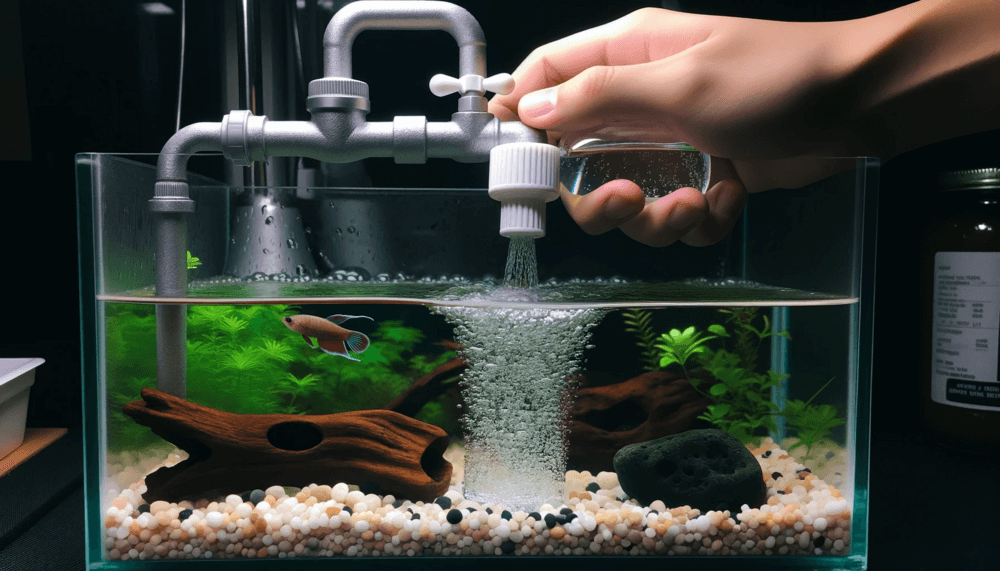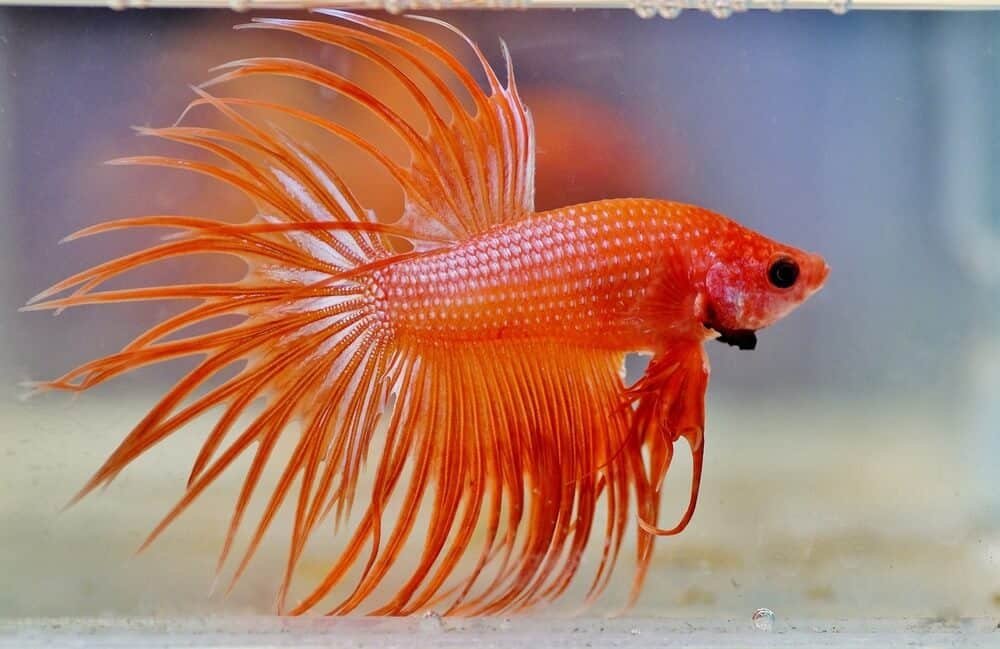If you’re a new aquarium owner or just starting out, one question that often comes to mind is, “Can I use tap water to fill my aquarium?” It’s a common concern, as tap water contains various chemicals and additives that may be harmful to the delicate ecosystem within your tank.
In this article, we’ll explore the factors to consider when using tap water for your aquarium and provide helpful tips to ensure the well-being of your aquatic friends.
Let’s dive in and find out how to make the right choice for your underwater companions!
Can I Use Tap Water To Fill My Aquarium?
If you’re a beginner aquarist, you may be wondering if it’s safe to use tap water to fill your aquarium. The answer is, it depends.
There are several factors to consider before filling your tank with tap water, including source water quality, chlorine and chloramine levels, pH level, water hardness, temperature, nitrate and heavy metal content, filtering and conditioning options, dechlorination methods, and other important considerations.
In this comprehensive article, we will explore all of these factors to help you make an informed decision about using tap water in your aquarium.
Water Source
The quality of tap water can vary depending on your location. Some areas have excellent tap water quality, while others may have water that is not suitable for aquarium use. It’s important to research and understand the source of your tap water.
Contact your local water authority or conduct a water quality test to determine the specific characteristics of your tap water. This will help you identify any potential issues and take appropriate measures to ensure the health and well-being of your aquatic pets.
Chlorine and Chloramine
One of the most crucial factors to consider when using tap water in your aquarium is the presence of chlorine and chloramine. These chemicals are commonly added to tap water as disinfectants, but they can be harmful to aquatic life.
Chlorine is relatively easy to remove by simply letting tap water sit overnight, as it will naturally evaporate. However, chloramine is a more stable compound and requires additional treatment.
Investing in a water conditioner specifically designed to neutralize chlorine and chloramine is highly recommended to ensure the safety of your aquarium inhabitants.
pH Level
The pH level of tap water can vary depending on the geographic region and source water. It’s essential to test the pH of your tap water before adding it to your aquarium, as many fish and other aquatic organisms have specific pH requirements.
Most tropical freshwater fish thrive in a pH range of 6.5 to 7.5. If your tap water’s pH level is significantly different from the ideal range, you may need to adjust it using appropriate pH buffers or choose fish species that can tolerate your tap water’s natural pH.
Water Hardness
Water hardness refers to the mineral content, specifically calcium and magnesium, present in tap water. The hardness of your tap water can vary depending on the source and geological characteristics of your area. Some fish species prefer soft water, while others thrive in hard water.
It’s essential to know the general hardness (GH) and carbonate hardness (KH) of your tap water to select fish species that will be comfortable and healthy in your aquarium.
If your tap water is too hard or too soft for your desired fish species, you can adjust it using appropriate additives or consider keeping fish that are naturally adapted to your tap water’s hardness.

Temperature
Tap water often differs in temperature from the ideal range for your aquarium. It’s crucial to match the temperature of the tap water with the temperature of your aquarium water to avoid shocking your fish.
Rapid temperature changes can stress and potentially harm fish. To achieve the desired temperature, you can use a thermometer to measure both the tap water and aquarium water temperatures and then adjust accordingly.
You may need to use a heater or allow the tap water to sit until it reaches room temperature if it is significantly colder or warmer than your aquarium water.
Nitrate and Heavy Metals
Tap water can contain nitrates and heavy metals that are potentially harmful to your aquarium inhabitants. Nitrates are a byproduct of the nitrogen cycle in an aquarium and can be found in tap water due to agricultural runoff or water treatment processes.
While low levels of nitrates are generally safe, high concentrations can lead to poor water quality and health issues for your fish. Similarly, heavy metals like copper, lead, and zinc, which may be present in tap water, can be toxic to aquatic life.
Regularly testing your tap water for nitrate and heavy metal content is essential, and if levels are too high, consider using appropriate filtration systems or seeking alternative water sources.
Filtering and Conditioning
In addition to considering the quality of your tap water, it’s advisable to use filtering and conditioning methods to ensure optimal water quality in your aquarium.
A good filtration system, such as a mechanical filter, biological filter, and chemical filter, can help remove impurities, debris, and harmful substances from the water.
Conditioning the water involves treating it with water conditioners or additives that neutralize harmful chemicals, balance pH levels, and enhance the overall health of your aquarium.
By investing in quality filtration equipment and using appropriate water conditioners, you can provide a clean and safe environment for your aquatic pets.
Dechlorination Options
As previously mentioned, dechlorinating tap water is crucial for the health and well-being of your aquarium inhabitants. There are various dechlorination options available, including water conditioners, carbon filters, and dechlorination tablets.
Water conditioners are the most common and convenient method to remove chlorine and chloramine from tap water. They work by neutralizing these chemicals and making the water safe for your fish.
Carbon filters, although not as effective as water conditioners, can also help remove chlorine and other impurities from tap water.
Dechlorination tablets are another option, but they can be less practical for larger aquariums. Choose the dechlorination method that suits your aquarium size and needs.
Other Considerations
While tap water can be used in many aquarium setups, there are some additional considerations to keep in mind. If your tap water’s quality is consistently poor or contains excessive levels of chlorine, chloramine, or other harmful substances, you may need to consider alternative water sources, such as using bottled water or installing a reverse osmosis and deionization (RODI) system.
Additionally, if you have sensitive or rare species of fish or invertebrates, it’s recommended to perform regular water tests and consult with experienced aquarists to ensure their specific needs are met.
Conclusion
In conclusion, tap water can be used to fill your aquarium, but it’s crucial to consider multiple factors to ensure the health and well-being of your aquatic pets.
Understanding the quality and characteristics of your tap water, including chlorine and chloramine levels, pH, water hardness, temperature, nitrate and heavy metal content, and available filtering and conditioning options, will help you make informed decisions about using tap water.
By taking appropriate measures such as dechlorination, water conditioning, and filtration, you can provide a safe and comfortable home for your fish and other aquatic organisms.
Remember to regularly monitor the water quality in your aquarium and make necessary adjustments as needed to maintain an optimal environment for your beloved aquatic pets.





